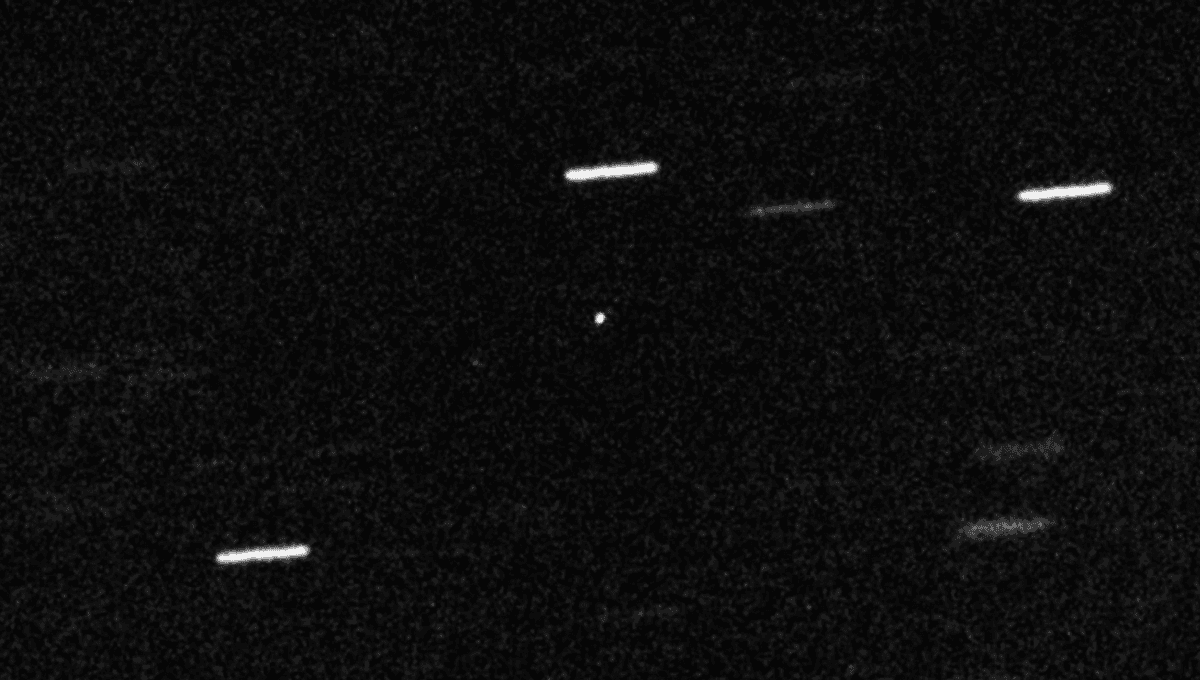In 2017, astronomers searching for near-Earth asteroids at the Pan-STARRS1 observatory discovered an object as it hurtled past our sun at 38.3 kilometers per second (23.8 miles per second).
Soon, telescopes around the world were pointed in the direction of this unusual object, trying to capture as much data as possible before it drifted away from the sun. By observing the visible light reflected by the object, scientists were able to determine its size and shape, finding that it was about 400 meters (1,300 feet) long and probably shaped like a pancake.
The speed and trajectory of object A/2017 U1 indicate that it did not originate from our solar system and that it will leave our solar system again. ‘Oumuamua, now known as ‘Oumuamua, is our first confirmed interstellar visitor.
One thing that puzzles scientists about this object is that it experiences non-gravitational acceleration as it travels through the solar system, meaning that the acceleration it experiences cannot be explained solely by the gravity acting on it. While this has led some, including controversial astronomer Avi Loeb of Harvard University, to speculate that ‘Oumuamua could be an alien spacecraft or a probe that generates its own thrust, many more possible explanations have been proposed.
What really puzzles astronomers is not acceleration per se. As comets approach the sun and heat up, they outgas, losing gas and dust and forming a tail, or coma. This exhaust acts like a thruster, slightly changing the comet’s orbit, rotation, and speed. Outgassing could explain ‘Oumuamua’s acceleration, but no coma has been observed, and its shape is unusual for a comet.
In 2023, a team proposed a solution: ‘Oumuamua is a water-rich planetesimal that lost hydrogen from its surface as it passed through the solar system.
“A comet that travels through the interstellar medium will basically be cooked by cosmic radiation, forming hydrogen. The idea is: if that happens, can you trap it inside the body so that when it enters the solar system, it When heated, does it release hydrogen gas? “This can quantitatively produce the nongravitational acceleration needed,” Jennifer Bergner, an assistant professor of chemistry at UC Berkeley and co-author of the paper, said in a statement. Power? “
Research conducted in the 20th century showed that when high-energy particles such as cosmic rays strike icy objects, hydrogen molecules (H2) are produced and trapped in the ice.
“For a comet a few kilometers in diameter, the outgassing would come from a very thin shell relative to the body of the object, so you wouldn’t necessarily expect it to be a detectable component, either in composition or in terms of any acceleration,” Bergner said. “But because ‘Oumuamua is so small, we think it actually generates enough force to drive this acceleration. “
The object is likely an interstellar planetesimal that lost hydrogen during its encounter with the Sun, changing its speed. Another study in 2017 suggested this could be the object’s first encounter with a star.
“The heliocentric incident velocity of Oumuamua in the right-hand galactic coordinates is v(U, V, W)=(11.2, 22.4, 7.6) km s1. This is very close to the average motion of stars near the Sun, and the deviation from the average of U and W is particularly small,” the team explained in the paper.
“Younger stars have smaller velocity dispersions than older systems, so this closeness to an accurate local mean velocity suggests an origin in a young star system, although the possibility that ‘Oumuamua has been orbiting the galaxy for billions of years cannot be ruled out .
However, there have been challenges in explaining hydrogen, with physical chemist Niels Ligterink proposing that “modelling, laboratory and theoretical results indicate that sufficient H is unlikely to exist.”2 If the object is composed mostly of H, it can be produced in Oumuamua to speed it up2Oh ice”.
“This means that there must be another or additional driver of ‘Oumuamua’s acceleration, or that the object has a very unusual ice composition and is much older than assumed (>500 Myr,” he wrote in response to the 2023 study. )”.
However, he assumes that if the object yes Being much older than assumed and containing (for example) methanol, there may be a sufficiently large yield to produce the observed acceleration once degassing begins.
In response to Ligterink, the team noted that “it is clear that additional experimental efforts are needed to explore trends in H”2O radiolysis, such as thicker ice and longer time scales. However, the available experimental data do not convincingly demonstrate higher H2 This is unlikely to happen in an astrophysical environment,” he said, adding that the experimentally found higher yields (around 35%) are generally consistent with uncertainties.
“We agree that when modeling ‘Oumuamua’s behavior it is important to consider factors such as its age and the dose of energy it received, as well as the ice phase H.2 “Ultimately, the model proposed in our paper can explain the non-gravitational acceleration of ‘Oumuamuas through the assumptions of age, composition and H,” the team wrote in response.2 The content of the body is compatible with existing experimental and observational constraints.
Studying this object closer can tell us more about young star systems. Unfortunately, it is now beyond the range of our existing telescopes, so detectors are needed to study it in more detail. Such a mission, known as Project Lyra, was proposed to achieve this goal, perhaps by ejecting past Jupiter and gaining gravitational acceleration.
#caused #nongravitational #acceleration #interstellar #visitor
Image Source : www.iflscience.com
